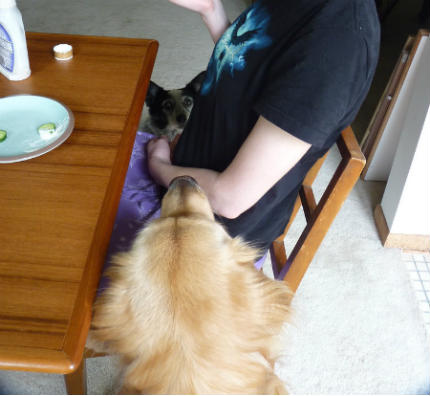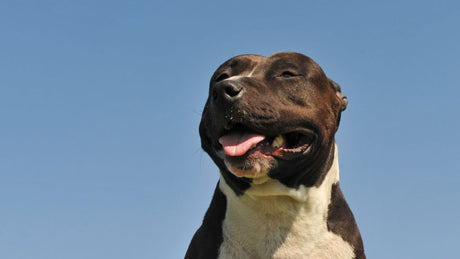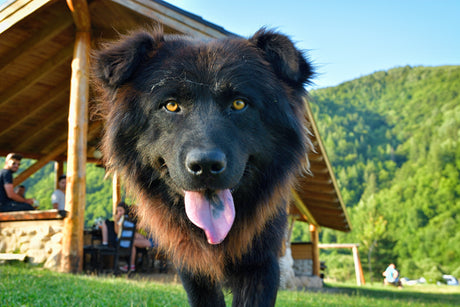Transmission of leishmaniasis disease
Leishmania is a diphasic parasite that completes its life cycle in two hosts: a sand fly that harbors the flagellated extracellular promastigote form and a mammal in which the intracellular amastigotic form of the parasite develops. That is, the parasite is inactive while it is in its first host: the sand fly or sand fly . Once the parasite has contact with the next host, a mammal, it develops and reproduces, becoming lethal. Transmission is a complex process that requires a special adaptation between the sand fly host and the particular species of Leishmania transmitted. There are numerous species of sand flies, of which only a minority can act as competent carriers of the parasite. The incubation period of infection until symptoms appear ranges from a month to many years. Some dogs may be infected with the leishmaniasis parasite for an extended period of time and not show any symptoms of the disease . In asymptomatic dogs, the parasite can remain inactive for some time , even years, before an external stimulant, such as stress or illness, activates the parasite, causing it to multiply and attack the body where it resides. Eventually the dog could develop a skin infection or a visceral reaction. However, in both symptomatic and asymptomatic cases, the hosts are capable of infecting the sand fly which would subsequently infect other animals.
Transmission is a complex process that requires a special adaptation between the sand fly host and the particular species of Leishmania transmitted. There are numerous species of sand flies, of which only a minority can act as competent carriers of the parasite. The incubation period of infection until symptoms appear ranges from a month to many years. Some dogs may be infected with the leishmaniasis parasite for an extended period of time and not show any symptoms of the disease . In asymptomatic dogs, the parasite can remain inactive for some time , even years, before an external stimulant, such as stress or illness, activates the parasite, causing it to multiply and attack the body where it resides. Eventually the dog could develop a skin infection or a visceral reaction. However, in both symptomatic and asymptomatic cases, the hosts are capable of infecting the sand fly which would subsequently infect other animals.  Symptoms and types of leishmaniasis
Symptoms and types of leishmaniasisEach of the types of leishmaniasis in dogs , visceral or cutaneous, presents different characteristics, below are the most common symptoms in cases of leishmaniasis: Visceral leishmaniasis . It is sometimes referred to as systematic leishmaniasis. It commonly occurs two to eight months after the sand fly bite. It mainly damages internal organs, such as the spleen, kidneys or liver. It also harms the animal's immune system and spinal cord. If left untreated, this type of leishmaniasis can be fatal .
 Main symptoms of visceral leishmaniasis :
Main symptoms of visceral leishmaniasis :
- Loss of appetite.
- Severe weight loss as a result of lack of appetite.
- Diarrhea.
- Tarry stools.
- Threw up.
- Nosebleed.
- Movement intolerance.
- Hyperkeratosis is the most common symptom. Epidermal peeling with thickening of the skin, depigmentation (loss of color in the skin) and cracks in the paw pads, in some cases abnormal growth may be shown in the hooves of the canine.
- Alopecia, dry and brittle hair with symmetrical hair loss.
- Nodules on the surface of the skin.
- Intradermal nodules and ulcers.
- Brittle nails are normal in some cases.
 Other symptoms associated with leishmaniasis:
Other symptoms associated with leishmaniasis:
- Lymphadenopathy: disease of the lymph nodes with skin lesions in 90 percent of cases.
- Slimming.
- Signs of kidney failure: excessive urination, excessive thirst and possible vomiting.
- Articulations pain.
- Inflammation of the muscles.
- Swollen spleen in about a third of patients.
Causes of leishmaniasis
Pets, and even humans, can be exposed to the virus when traveling to endemic regions , areas where it is most common to find the sand fly, this being the most common way to contract the disease. The parasite lives and multiplies inside the female sand fly. This insect is most active in humid environments during the hottest months of the year. Domestic animals, such as dogs, can serve as vessels for the parasite. Leishmania is a parasite that affects rodents, carnivores, marsupials, dogs and humans. The disease becomes more serious when the host is human or in dogs, and is characterized by skin lesions or deterioration of internal organs , especially those in the abdominal area. In which places is leishmaniasis most common?
In which places is leishmaniasis most common? Geographically, this disease is found anywhere in the world, except Australia and Antarctica, however, 95 percent of cases occur in the following places:
- America
- Central Asia
- The Mediterranean basin
- The middle east
- Brazil
- Ethiopia
- India
- Kenya
- Somalia
- Sudan
Diagnosis of leishmaniasis infection
It is important to take into account the places that were visited, this way the veterinarian will know what to look for when performing physical or blood examinations, it will also be easier to rule out possible diseases. Diagnosis of cutaneous leishmaniasis
Diagnosis of cutaneous leishmaniasis The veterinarian must take a small sample of the skin to perform a biopsy of the tissue, this is taken by scraping the surface of the ulcer. Normally the DNA or genetic material of the parasite is searched; there are varieties of methods to identify what type of parasite it is. Once diagnosed and treatment started, the dog has a great chance of surviving with few or no side effects.
Diagnosis of visceral leishmaniasis
It is difficult for humans to remember when they were bitten by a mosquito, it is even more difficult when the person affected is a dog, this can make early detection of the infection difficult. Knowing what the pet was exposed to can be very helpful. When the presence of visceral leishmaniasis infection is suspected, the doctor should examine the internal organs in search of lesions or inflammation, paying more attention to the kidneys, liver and spleen, as these are the main organs affected in most cases. Complications of leishmaniasis
Complications of leishmaniasisCutaneous leishmaniasis may include:
- Bleeding.
- Other infections due to weak immune system.
- In the long term, ulcer scars can lead to disfigurement; treatment can reduce their severity.
 Treatment against leishmaniasis
Treatment against leishmaniasisRegarding the treatment to combat leishmaniasis , this mainly consists of two drugs:
- Meglumine antimoniate , an antiprotozoan whose effect is to inhibit the glycolytic enzymes of the parasite
- Allopurinol , whose purpose is to reduce the production of uric acid in the body.
 As for allopurinol, treatment could last from six to two months, 10 mg/kg is administered twice a day. A balanced diet can be prescribed by the veterinarian, however, this may vary depending on the animal. A diet rich in antioxidants and proteins with low uric acid content is the most recommended so that the dog can recover its physical strength, muscle mass and motor abilities.
As for allopurinol, treatment could last from six to two months, 10 mg/kg is administered twice a day. A balanced diet can be prescribed by the veterinarian, however, this may vary depending on the animal. A diet rich in antioxidants and proteins with low uric acid content is the most recommended so that the dog can recover its physical strength, muscle mass and motor abilities.
Cutaneous leishmaniasis
Ulcers formed by leishmaniasis usually do not require any treatment, they heal on their own. Likewise, treatment can help speed healing and reduce the risk of complications. Likewise, ulcers can cause disfigurement in the host of the infection. Depending on their severity, these lesions may require plastic surgery. Visceral leishmaniasis
Visceral leishmaniasisVisceral leishmaniasis will always require treatment . Various medications are available. Commonly used medications include sodium stibogluconate, amphotericin B, paromomycin, and miltefosine.
How can we prevent leishmaniasis?
There is no vaccine or medicine that helps prevent contact with the Leishmania parasite. The safest way to avoid contracting this infection is to avoid being bitten by the sand fly . Some of the preventive measures that can be taken are:
Some of the preventive measures that can be taken are:
- Dogs should undergo periodic clinical and laboratory checks to detect infection early.
- Every dog (healthy, infected or sick) should be protected with pyrethroids (which antiparasitic pipettes contain) to reduce contact with sand flies.












